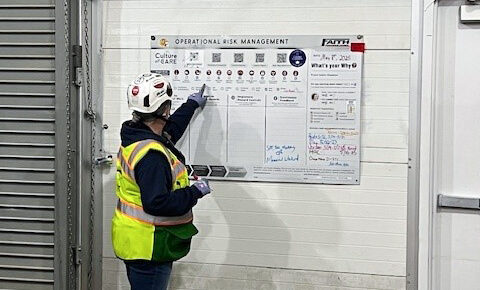
Heat acclimation is a critical process for all construction workers who work in hot environments. Through continual exposure, the human body is capable of adapting to hot conditions, leading to physiological modifications that improve its ability to withstand heat. These changes include increased sweat production and a lower core body temperature, which help maintain optimized performance and prevent heat-related illnesses. Acclimation typically requires one to two weeks of gradual exposure to high temperatures, allowing the body to adjust without overwhelming its cooling mechanisms.
In the construction industry, heat acclimation can significantly reduce the risk of heat stress, heat exhaustion and heat stroke. Workers who are acclimated to heat are better able to sustain physical performance and productivity, as their bodies are more efficient at dissipating heat.
At FTI, we facilitate heat acclimation by implementing a structured program that gradually increases the duration and intensity of heat exposure. Per OSHA recommendations, new workers need time to acclimate unless they have previously worked in hot environments. To prevent heat-related illnesses, they should work shorter workdays in the heat during their first 1-2 weeks. OSHA and NIOSH recommend the “Rule of 20%” for building heat tolerance:
- 20% First Day: New workers should work in the heat only 20% of the normal duration on their first day.
- 20% Each Additional Day: Increase work duration in the heat by 20% on subsequent days until the worker is performing a normal schedule.
This program can also include scheduled breaks, hydration strategies and monitoring of workers’ health to ensure they are adapting safely.
Beyond physical benefits, heat acclimation also contributes to a safer work environment. Acclimated workers are less likely to experience heat-related events which can affect focus and decision-making, leading to potential injuries and or property/equipment damage. Proper acclimation practices, coupled with ongoing education about the signs and symptoms of heat-related illnesses, empower workers to recognize and respond to heat stress promptly.
Are you ensuring that your team members have the resources to work safely in high-heat conditions? Be sure to follow the heat acclimation steps noted above, and see OSHA’s Heat Illness Prevention resources for more information to educate your crew and yourself and stay safe throughout the hot summer months.










